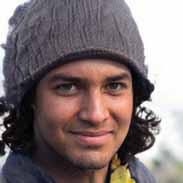Biology Exam #3 Chapter 53 – Flashcards
Unlock all answers in this set
Unlock answersquestion
Population
answer
organisms living in the same place at the same time
question
3 important characteristics of populations
answer
Range Spacing Size
question
Geographic ranges
answer
Change over time
question
Demography
answer
Study of populations
question
2 ways to approach studies of population changes over time
answer
Entire population (increasing? decreasing?) Component of population (birth and death rate at certain age)
question
Factors that my influence population growth
answer
Sex ratio Generation times Life span
question
Survivorship
answer
certain age for population to survive to
question
Natural populations
answer
Cannot grow at an exponential rate
question
Attributes to the logistic curve
answer
Mathematical simplicity Apparent reality
question
Population density
answer
number of individuals per unit area
question
Patterns of dispersion
answer
Clumped Uniform Random
question
When do the populations increase?
answer
Births and immigration
question
When do the populations decrease?
answer
deaths and emigration
question
What summarizes specific tends in demography?
answer
Life tables, survivor ship, curves and reproductive tables
question
exponential growth equation
answer
dN/dt = r(max)N
question
Carrying capactiy
answer
the maximum population size the environment can support
question
Logistic growth equation
answer
dN/dt = r(max)N(K-N)/K
question
Life history
answer
evolutionary outcomes reflected in organisms
question
Semelparous
answer
reproduce once and die
question
Iteroparous
answer
reproduce repeatedly
question
K-selection
answer
density-dependent selection
question
r-selection
answer
density-independent selection
question
density-dependent
answer
death rates raise and birth rates fall
question
density-independent
answer
birth and death rates do not vary
question
What are some limiting factors for density-dependence?
answer
competition, increased predation, disease, stress, toxic substances
question
Metapopulation
answer
group of populations linked by immigration and emigration
question
Ecological footprint
answer
aggregate land and water area needed to produce all the resources a person or group of people consume and to absorb all their wastes
question
Population ecologists follow the fate of same-age cohorts to A) determine a population's carrying capacity B) determine the birth rate and death rate of each group in a population C) determine if a population is regulated by density-dependent processes D) determine the factors that regulate the size of a population E) determine if a population's growth is cyclic
answer
B) determine the birth rate and death rate of each group in a population
question
A population's carrying capacity A) may change as environmental conditions change B) can be accurately calculated using the logistic growth model C) generally remains constant over time D) increases as the per capita growth rate (r) decreases E) can never be exceeded
answer
A) may change as environmental conditions change
question
Scientific study of the population cycles of the snowshoe hare and its predator, the lynx, has revealed that A) the prey population is controlled by predators alone B) hares and lynx are so mutually dependent that each species cannot survive without the other C) multiple biotic and abiotic factors contribute to the cycling of the hare and lynx populations D) both hare and lynx populations are regulated mainly by abiotic factors E) the hare population is r-selected and the lynx population is K-selected
answer
C) multiple biotic and abiotic factors contribute to the cycling of the hare and lynx populations
question
Based on current growth rate, Earth's human population in 2012 will be closest to A) 2 million B) 3 billion C) 4 billion D) 7 billion E) 10 billion
answer
D) 7 billion
question
A recent study of ecological footprints concluded that A) Earth's carrying capacity for humans is about 10 billion B) Earth's carrying capacity would increase if per capita meat consumption increased C) current demand by industrialized countries for resources is much smaller than the ecological footprint of those countries D) it is not possible for technological improvements to increase Earth's carrying capacity for humans E) the ecological footprint of the United States is large because per capita resource use is high
answer
E) the ecological footprint of the United States is large because per capita resource use is high
question
The observation that members of a population are uniformly distributed suggests that A) the size of the area occupied by the population is increasing B) resources are distributed unevenly C) the members of the population are competing for access to a resource D) the members of the population are neither attracted to nor repelled by one another E) the density of the population is low
answer
C) the members of the population are competing for access to a resource
question
According to the logistic growth equation dN/dt = r(max)N (K - N)/K A) the number of individuals added per unit time is greatest when N is close to zero B) the per capita growth rate (r) increases as N approaches K C) population growth is zero when N equals K D) the population grows exponentially when K is small E) the birth rate (b) approaches zero as N approaches K
answer
C) population growth is zero when N equals K
question
Which pair of terms most accurately describes life history traits for a stable population of wolves? A) semelparous; r-selected B) semelparous; K-selected C) iteroparous; r-selected D) iteroparous; K-selected E) iteroparous; N-selected
answer
D) iteroparous; K-selected
question
During exponential growth, a population always A) grows by thousands of indivduals B) grows at its maximum per capita rate C) quickly reaches its carrying capacity D) cycles through time E) loses some individuals to emigration
answer
B) grows at its maximum per capita rate
question
Which of the following statements about human population in industrialized countries is incorrect? A) life history is r-selected B) average family size is relatively small C) the population has undergone the demographic transition D) the survivorship curve is Type 1 E) age distribution is relatively uniform
answer
A) life history is r-selected



